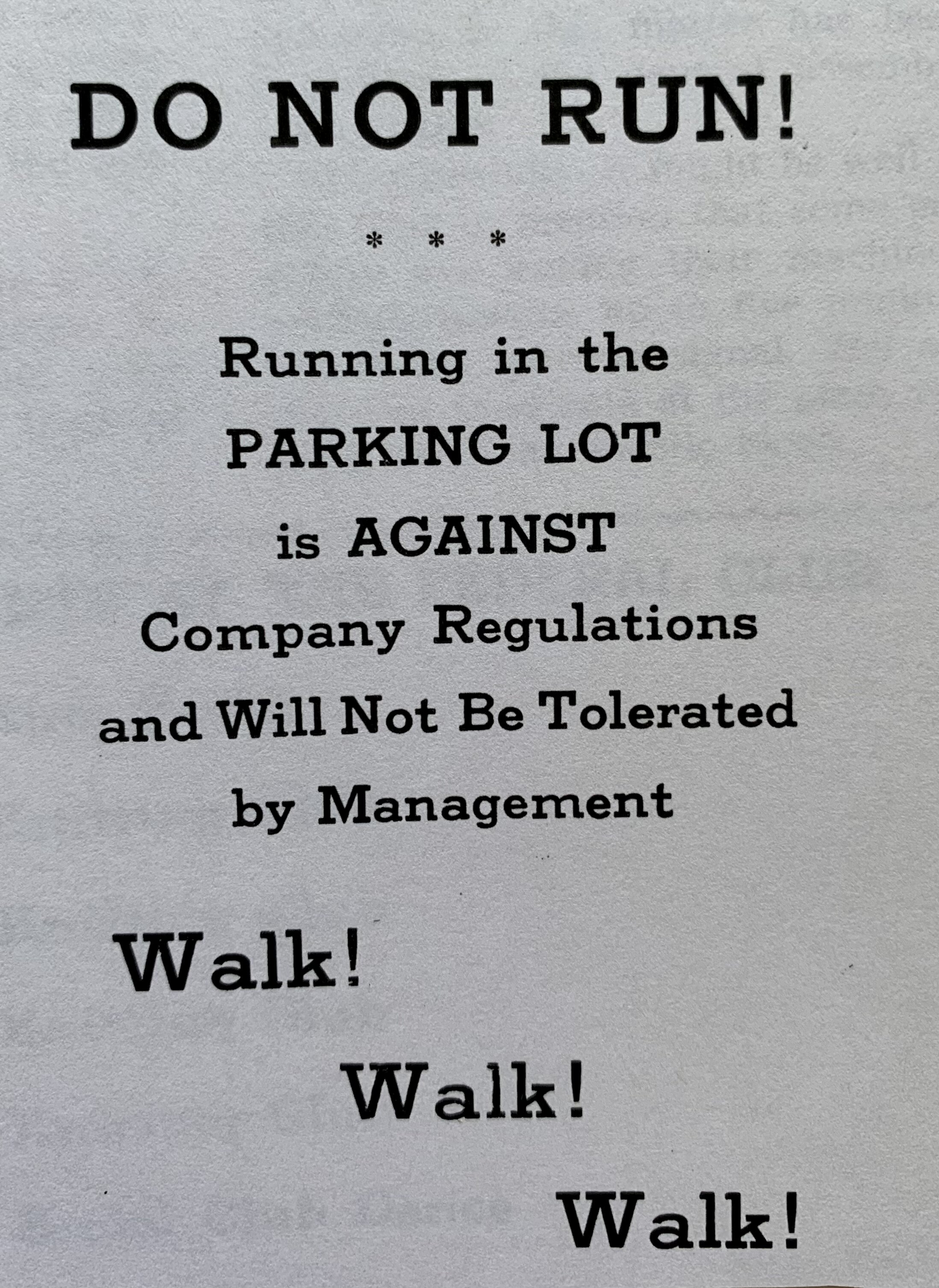Safety at Federal
Shooting requires responsibility from the gun owner
While a large portion of Federal ammunition went to military and government contracts, a significant percentage of their shooters remained in the fields of competition, recreation, and hunting. In order to protect the rights of citizens to have access to firearms and, by extension, purchase ammunition, Federal Cartridge consistently marketed messages of safety to its consumers.
The employee magazine, The Monark, often had articles such as, “Hunters Need to be Doubly Careful with Guns Near Children” (right) that discussed the high number of people injured or killed in the home—and clearly laid the blame on adults for not unloading and locking up a gun.
The Quick-Draw Craze
In another article printed September 4, 1959 titled, “The Quick-Draw Craze”, Federal acknowledged the dangers of the trend made popular by Westerns on television. The professionals making these stunts look real used blank cartridges, wax bullets, or cartridges with only primers as well as a “dummy bad man” or their reflection in a mirror for entertainment purposes.
“Unfortunately, safe practices are not followed in many cases,” said the article. “Because of excessive enthusiasm for this activity, too many uninformed or indifferent people are practicing fast-draw with live ammunition. The newspapers are reporting more and more gun accidents.”
While most incidents remained self-inflicted wounds “which result from the gunslinger being quicker on the trigger than he is on the draw”, the article detailed several serious incidents and a few deaths across the US during this time.
“It is true that the ability to draw quickly has its important place in police work,” said the article. “It is also true that we should not object to the legitimate use of a firearm for recreation. At the same time, people who try to emulate the cowboys in Westerns must be made to realize that Western-style fast-draw gunslinging, with live ammunition, is a dangerous practice and has no place in marksmanship training or sport shooting,”
To read more Monark magazines and articles like these, visit ACHS and browse the table in the “Clubhouse”!
These safety posters (below) were produced by Sporting Arms and Ammunition Manufacturers' Institute for Federal’s use and are on display in the ACHS exhibit hall.
Find more interesting things in our online collection! Just search “Federal” and you’ll be surprised what you’ll discover.
From the Monark magazine, August 27, 1965 p. 2
Safety at Work
Federal’s concern with safety didn’t stop at the use of guns and ammunition. Reducing and eliminating factory accidents had to stay a priority of Charles Horn. Whether reprimanding his employees for smoking in places other than the breakroom, not taking showers before leaving, or being careless on the machinery, ACHS has many documents detailing the protocols of Federal Cartridge.
In 1943 Federal Cartridge Corporation employees received the National Safety Council award, which subsequently hung in the club house. Elder Opem served as Safety Engineer at that time and entered the factory three consecutive years prior to receiving the award. Based on the number of disabling injuries “suffered by employees of competing plants” Opem said FCC hadn’t had an incident serious enough to prevent the employee from returning to work the following day.
Toward the end of 1943, the Monark published a small piece entitled, “Save Your Hands”. It suggests keeping tools sharp and in good condition, forbidding rings, watches, and other jewelry, and not letting grease or oil accumulate on the skin to avoid rashes. The First Aid room had free “protective creams” for employees.
Safety glasses, like the ones pictured on the left, were provided either free or at a reduced cost to employees, depending on the era. In the September 4, 1959 Monark, Lige Southard reportedly came to the Safety Office “with one lens cracked and a small slice cut right in the center of the lens.” His close call experience was held up as an example for others to help avoid future tragedies.
By the March 9, 1960 edition of the Monark magazine, employees read about “good housekeeping” around the factory that reminded them “a clean plant in which to work makes everyone more satisfied.” It suggested that rags left on window sills, as well as candy and gum wrappers should be left in their “receptacles meant for that purpose.”
Employees dashing from the plant to the clockhouse seems to have presented an ongoing issue for management, as the Monark carries many notices like the one to the right. “This habit is not only discourteous to others but is also in violation of Company rules as well as presenting a safety hazard.”











